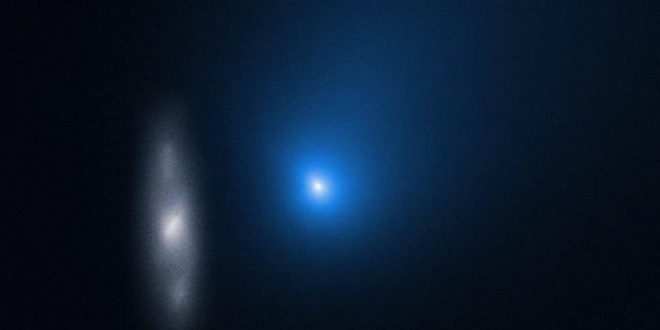First known interstellar comet also turns out to be one of the fastest known
Nasa has released never-before-seen images of 2I/Borisov, only the second known object to have visited our solar system from elsewhere.
The image shows the comet in front of a distant spiral galaxy, which can be made out to the side. But the focus of the imags is the bright blue centre of the image, which was taken by the Hubble Space Telescope as it tracked the comet through space.
Since then, scientists have been taking images of the comet as it moves nearer to the Earth and can be seen in better detail. The first observations from Hubble came in October, and the new images come from November and December, offering a better look at the size and other details of the visitor.
When this image was taken, the object was 326 million kilometres from Earth. Scientists can now use it and other observations to learn more about the comet.
“Hubble gives us the best measure of the size of comet Borisov’s nucleus, which is the really important part of the comet,” said David Jewitt, a professor of planetary science and astronomy at the University of California Los Angeles, whose team has captured the best and sharpest images of this first interstellar comet.
“Surprisingly, our Hubble images show that its nucleus is more than 15 times smaller than earlier investigations suggested it might be. The radius is smaller than half a kilometre. This is important because knowing the size helps us to determine the total number, and mass, of such objects in the Solar System, and in the Milky Way. Borisov is the first known interstellar comet, and we would like to know how many others there are.”
Scientists now expect to see other interstellar objects, and compare those with the two mysterious objects they have already been able to see.
the Independent
 Lebanese Ministry of Information
Lebanese Ministry of Information



